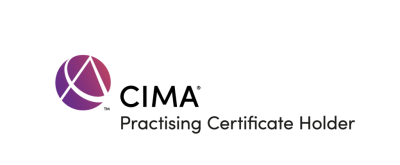Changes to the National Insurance Contributions from April 2024
The self-employed have historically paid two classes of National Insurance – Class 2 and Class 4. However, this is set to change from April 2024 with the abolition of Class 2 National Insurance contributions.
What are Class 2 National Insurance contributions?
The payment of Class 2 contributions has enabled a self-employed person to build up entitlement to the state pension and contributory benefits.
Class 2 contributions are flat-rate weekly contributions payable where profits from self-employment exceed the lower profits threshold, set at £12,570 for 2023/24. The threshold is aligned with the personal allowance and the lower profit limit applying for Class 4 purposes.
Where profits fall between the small profits threshold (set at £6,725 for 2023/24) and the lower profits threshold, a self-employed earner is treated as having paid Class 2 contributions at a zero rate, thereby earning a qualifying year without actually having to pay any National Insurance.
A self-employed earner whose profits are below the small profits threshold is not liable to pay Class 2 National Insurance contributions, but can make voluntary contributions if they choose in order to maintain their state pension record. This is a much cheaper option than paying Class 3 contributions.
The abolition of Class 2 contributions has been a long time coming. Class 2 contributions were to have been abolished and Class 4 contributions reformed with effect from 6 April 2019 (having already been delayed a year). Following a U-turn, the reforms were put on hold as a result of concerns that self-employed earners with low earnings would lose out. However, the introduction of the lower profits threshold and a deemed zero rate on contributions between the small profits threshold and lower profits threshold has addressed this issue, paving the way for the abolition of Class 2 contributions.
What are Class 4 National Insurance contributions?
Class 4 contributions are profit-related contributions payable by self-employed earners. Contributions are payable at the main Class 4 rate on profits between the lower profits limit and the upper profits limit, and at the additional Class 4 rate on profits in excess of the upper profits limit.
For 2024/25, the lower profits limit is £12,570 and the upper profits limit is £50,270, unchanged from 2023/24 and due to remain at this level until 5 April 2028.
For 2024/25, the main Class 4 rate is 8%, having been reduced from 9%. The additional Class 4 rate is 2%.
How can the self-employed build up pension entitlement for 2024/25 and beyond?
With the abolition of Class 2 National Insurance contributions from 6 April 2024, self-employed earners will for 2024/25 onwards build up entitlement to the state pension and contributory benefits where their earnings exceed £12,570. This is the point at which Class 4 contributions become payable.
However, self-employed earners with profits between £6,725 and £12,570 for 2024/25 will receive a National Insurance credit, earning them entitlement to the state pension and contributory benefits, despite not paying any National Insurance.
For 2024/25, self-employed earners with profits of less than £6,725 will still be able to make voluntary contributions at the 2023/24 Class 2 rate of £3.45 per week. This will be much cheaper than paying Class 3 voluntary contributions, which are to remain at £17.45 per week for 2024/25.
For further details about the measure, you can read the government’s policy paper.
Are you looking to switch Accountant?
Growing businesses need more from their accountant; as business accountants, analysts and advisors, we help you understand and manage your numbers to drive plans and decision making. If you would like to discuss the ways Focal Business Group can help you and your business, simply call 0800 112 0880 or email [email protected].
Read more articles from Focal Business Group.Edit

